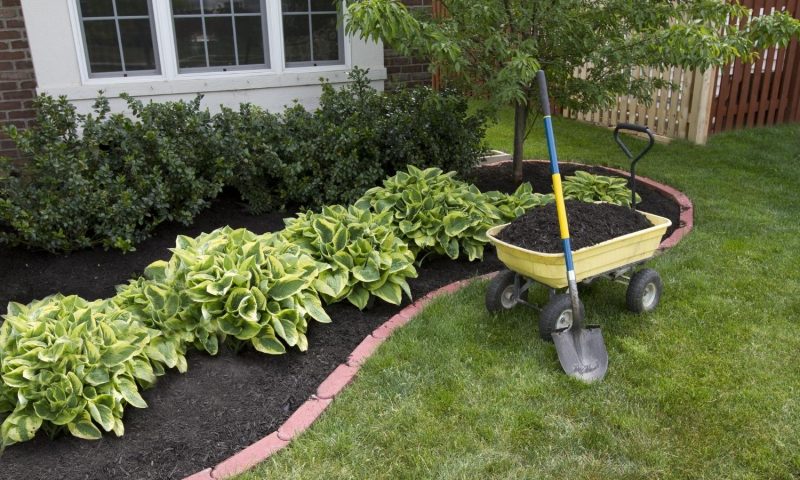Erosion picks soil up from where it’s needed and deposits it where it shouldn’t be. These are some ways to prevent and repair erosion in your yard.
Gardeners and landscapers know that trees, shrubs, and plants need good soil to thrive. Rain and wind, however, can carry away well-worked, rich soil and leave tree roots bare and plants starved of nutrients. Learn some ways to prevent and repair erosion in your yard.
Identify Problem Areas
Erosion leaves telltale markers. Wind is one cause, but the more likely culprit is rain—coupled with a slope that makes it easy for water to run downhill, carrying soil and debris with it into ponds, streams, or a neighbor’s yard. Inspect your landscape for signs of erosion and identify areas that need attention, such as under and around trees and in low spots where rainwater gathers until it overflows and runs down the nearest incline.
Mulch, Mulch, Mulch
Protect the soil you’ve got by spreading a two-inch layer of mulch around trees and shrubs and in flower gardens. Natural mulch will feed the soil as it degrades. It also retains moisture and regulates soil temperature. The downside is that most mulch floats, and it requires frequent—at least annual—replacement.
Plant Shrubs and Grasses
So-called “foundation plantings” are there for a reason—shrubs and grasses hold on to soil and prevent erosion. If you have bare spots near your home’s foundation, aerate and fertilize the soil with compost, and plant grasses or shrubs suitable for the location. You don’t want plants that will grow very large or that have roots that can invade the foundation too close to the house. But low-growing ground covers, grasses, and compact shrubs can hang on to your soil.
Fix Bare Spots in the Lawn
Bare spots aren’t just unsightly—they’re signs of distress in the landscape. Heavy clay or highly compacted soils make trees and plants work hard to get the oxygen and nutrients they need. Repair bald spots by removing thatch, aerating, and putting down a layer of rich compost. Overseed with hardy grass rated for the amount of sun the spot gets, and then install a biodegradable mat over the seeded spot. Anchor the mat with soil staples. The new grass will grow right through the mat, and the mat will provide nutrients to the soil as it breaks down.
Install Drainage and Plant a Rain Garden
A French drain creates a stone or gravel course for water to run across and down into a perforated pipe that carries it away from the house and landscape. You may also want to consider planting a rain garden. Composed of plants that love water, rain gardens can reduce erosion in perennially soggy spots in your yard. The plants absorb a lot of the water that would otherwise just sit in the landscape or run off, carrying soil with it.
These are just a few tips and tricks to prevent and repair erosion in your yard. Consult a professional landscaper for big projects such as retaining walls and erosion protection on large or steep slopes.
